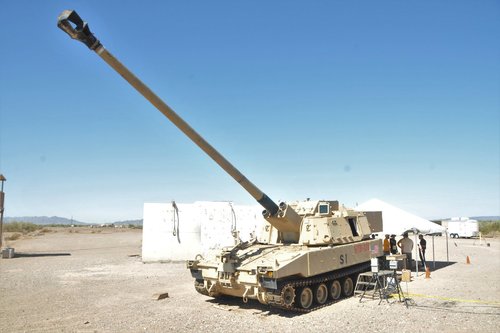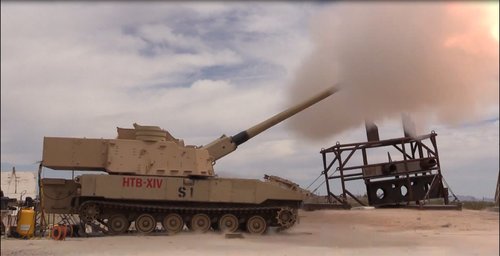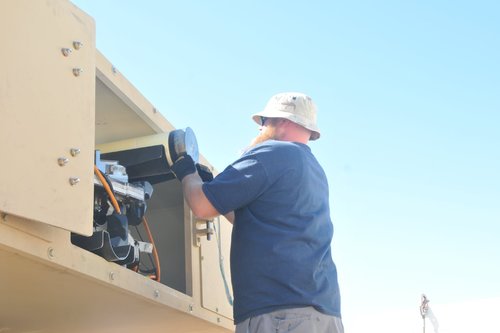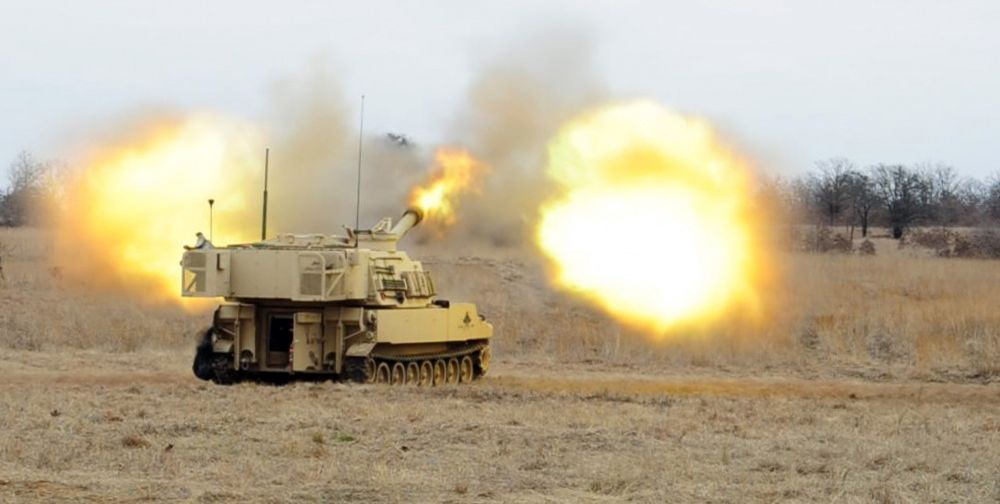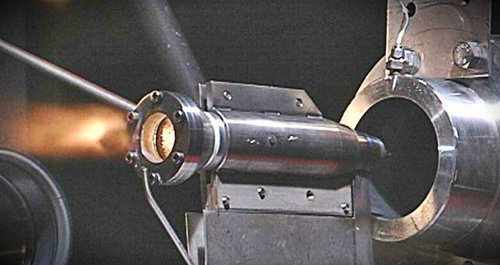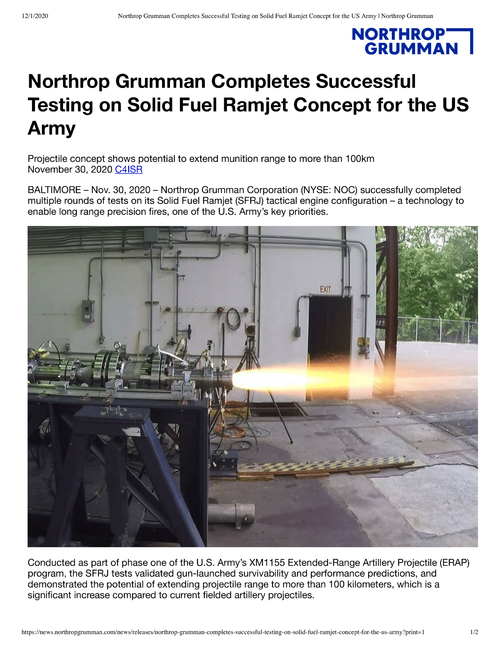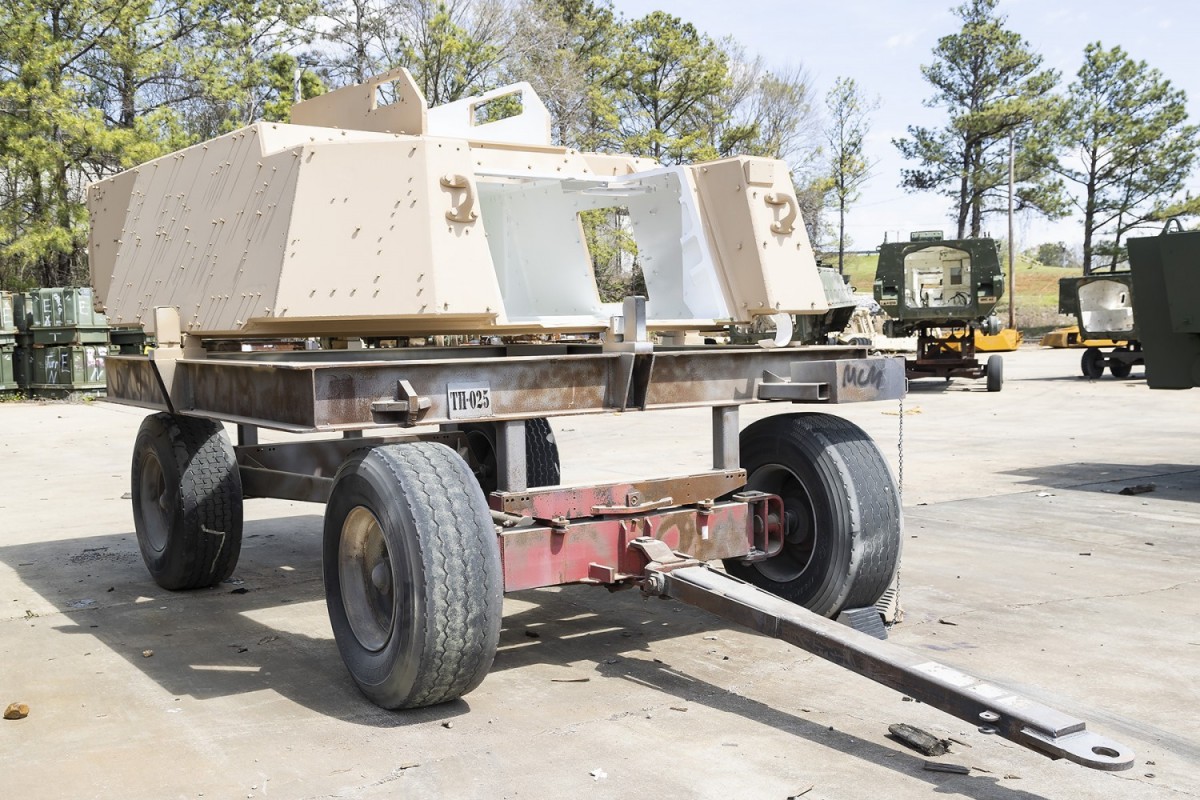aonestudio
I really should change my personal text
- Joined
- 11 March 2018
- Messages
- 2,964
- Reaction score
- 7,493
Picatinny Arsenal reveal details of Army’s extended-range artillery system

The American military research and manufacturing facility Picatinny Arsenal has given further details of the U.S. Army’s extended-range artillery system.
The Picatinny Arsenal’s presentation notes the U.S. Army aspires to field systems capable of accurately firing at targets 100 kilometers away in the next four years, a dramatic increase over the 30 kilometers a currently-fielded 155mm howitzer shell is capable of when fired at the top zone with rocket assistance.
According to the presentation, the Army’s effort is called Extended Range Cannon Artillery (ERCA). Building on mobility upgrades, ERCA will increase the lethality of self-propelled howitzers. ERCA provides a “10x” capability through a combination of an increased range, increased rate of fire, increased lethality, increased reliability and greater survivability.
ERCA will provide integrated cannon artillery technology solutions to maximize performance at a system level and regain lethality overmatch for U.S. Army 155mm indirect fire systems for operations in emerging battlespaces and near/peer environments.
The new artillery system will provide 300% improvement in area coverage for 155mm artillery, in so doing, a burst rate of fire greater than 6-10 rounds per minute and 30% range increase for legacy artillery ammunition.
The new extended-range artillery system will consist of five major components integrated into an M109 platform:

Further, the XM1113 is designed to utilize the currently-fielded Precision Guidance Kit (PGK), a fuze that turns conventional artillery round into a semi-guided one.
The XM1113 Insensitive Munition High Explosive Rocket Assisted Projectile is slated to replace the Army’s aging M549A1 rounds. Currently, the M549 rounds can reach about 30 km.
The XM1113 reached 72 km during a demonstration, said Rich Granitzki, Long-Range Precision Fires Science and Technology Advisor for Combat Capabilities Development Command, or CCDC, at Picatinny Arsenal, New Jersey.
Also noted that the extended-range artillery system will be able to use future XM1115 ammunition in a GPS denied environment.

 defence-blog.com
defence-blog.com
Ramjet projectile?



The American military research and manufacturing facility Picatinny Arsenal has given further details of the U.S. Army’s extended-range artillery system.
The Picatinny Arsenal’s presentation notes the U.S. Army aspires to field systems capable of accurately firing at targets 100 kilometers away in the next four years, a dramatic increase over the 30 kilometers a currently-fielded 155mm howitzer shell is capable of when fired at the top zone with rocket assistance.
According to the presentation, the Army’s effort is called Extended Range Cannon Artillery (ERCA). Building on mobility upgrades, ERCA will increase the lethality of self-propelled howitzers. ERCA provides a “10x” capability through a combination of an increased range, increased rate of fire, increased lethality, increased reliability and greater survivability.
ERCA will provide integrated cannon artillery technology solutions to maximize performance at a system level and regain lethality overmatch for U.S. Army 155mm indirect fire systems for operations in emerging battlespaces and near/peer environments.
The new artillery system will provide 300% improvement in area coverage for 155mm artillery, in so doing, a burst rate of fire greater than 6-10 rounds per minute and 30% range increase for legacy artillery ammunition.
The new extended-range artillery system will consist of five major components integrated into an M109 platform:

- XM907 cannon, and partial autoloader.
- XM208 Gun Mount.
- Ammo Handling.
- XM1113 Next-Generation Rocket Assist Projectile – 70km.
- Extended Range Propelling Charge (XM654).
Further, the XM1113 is designed to utilize the currently-fielded Precision Guidance Kit (PGK), a fuze that turns conventional artillery round into a semi-guided one.
The XM1113 Insensitive Munition High Explosive Rocket Assisted Projectile is slated to replace the Army’s aging M549A1 rounds. Currently, the M549 rounds can reach about 30 km.
The XM1113 reached 72 km during a demonstration, said Rich Granitzki, Long-Range Precision Fires Science and Technology Advisor for Combat Capabilities Development Command, or CCDC, at Picatinny Arsenal, New Jersey.
Also noted that the extended-range artillery system will be able to use future XM1115 ammunition in a GPS denied environment.

Picatinny Arsenal reveal details of Army’s extended-range artillery system
The American military research and manufacturing facility Picatinny Arsenal has given further details of the U.S. Army’s extended-range artillery system. The Picatinny Arsenal’s presentation notes the U.S. Army aspires to field systems capable of accurately firing at targets 100 kilometers away...
Ramjet projectile?



